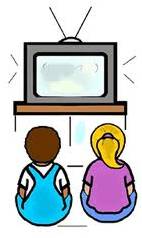Aut hors: Reuth Nir, M.D. and Frank J. Domino, M.D.
hors: Reuth Nir, M.D. and Frank J. Domino, M.D.
Reference: JAMA Pediatrics. December 23, 2015. doi:10.1001/jamapediatrics.2015.3753
Summary: Play with traditional toys and book reading are associated with increased quality and quantity of language input between parents and infants as compared with play with electronic toys. Play with electronic toys should be discouraged to promote early language development, which in turn influences future reading and academic success.
Methods: 26 parent-infant dyads were given 3 toy sets – electronic toys, traditional toys, and book– with instructions to engage in 2 15-minute play sessions per toy set in their own homes. These play sessions were recorded by LENA Pro System (Language Environment Analysis) and then analyzed for quantity and quality of the parent-infant communicative interaction based on the following outcome variables: (1) number of adult words, (2) number of content-specific words, (3) number of child vocalizations, (4) number of conversational turns, and (5) number of parent responses per minute. In analyzing the data, each of the dyads served as their own control, thus eliminating any factors specific to a given family (child’s developmental level, family’s ethnicity, family’s socioeconomic status, etc.) that may influence the communicative interaction.
Outcomes: The type of toy used during the play session was significantly associated with both the quantity and quality of language use. For all outcome variables, play with books and traditional toys provided a better communication interaction between parents and infants than did play with electronic toys. While play with books was overall superior, the differences in the outcome variables between play with books and traditional toys were small and inconsistent, suggesting both are appropriate activities for promoting increased and improved communicative interactions between parents and infants.
Conclusions: Play with electronic toys is associated with decreased quantity and quality of language use between parents and infants as compared with play with books or traditional toys and therefore should be discouraged. Book reading and play with traditional toys are nearly equivalent in facilitating rich communicative interactions and thus can both be encouraged for parent-infant playtime and the promotion of early language development.
Discussions: A child’s language environment has been shown to be critical in his or her early language development. Both quantity and quality of language exposure received from parents in the first few years of a child’s life are known to be positively associated with early language success, which has been shown to be significant for future academic success.
While this aspect of early language development has been widely studied and is well understood, little is known about how different forms of play activities affect the communicative interactions between parents and infants. Parents are encouraged to read to their child to promote language development; studies of programs such as “Reach Out and Read” have shown that reading improves language ability amongst young children. For the same reason, parents are also encouraged to engage in direct play with their child. But options for toys are plentiful – ranging from traditional toys, such as blocks and puzzles, to electronic toys that are advertised to be “educational” and beneficial for language development. With this variety and volume of options, it may be difficult for parents to know which toys and activities are best for their child.
Book reading is the superior choice for promoting rich parent-infant communication and early language development. During book reading, the number of adults words, content-specific words, child vocalizations, conversational turns, and parent verbal responses to child utterances were all increased. In essence, book reading increases the quantity and quality of language use between parents and infants and should be recommended by providers.
However, not all parents want to read to their pre-verbal child and not all children enjoy book reading activities. For those parents and infants, it is appropriate to alternatively recommend play with traditional toys, which have been shown to be nearly as efficacious as reading books in promoting early language development.
Electronic toys are expensive and do not facilitate comparable rich communicative interactions between parents and infants. Electronic toys should thus be avoided in infants, which is in line with the American Academy of Pediatrics’ discouragement of media use by children younger than 2 years of age.
It is important to note this study’s limitations. Given the specific focus on parent-infant interactions, the recommendations may not apply to older toddlers or preschool-aged children. It is also important to note parent-infant communication varies amongst different cultural and socioeconomic backgrounds so these recommendations may not apply broadly since the diversity of this study’s participants was limited.
Irrespective of these limitations, play with books and traditional toys are known to be beneficial for various forms of development – language, cognitive, social, spatial – and should always be recommended as the preferred play format to parents of young children. Per the American Academy of Pediatrics (2013 Screen Time Guidelines), this recommendation should be further coupled with counseling away from all electronics and media (as much as feasibly possible) during the first 2 years of life, as young children learn best by interacting with people rather than screens. Thereafter, electronics exposure should continue to be limited to no more than 2 hours per day and should preferably be of high-quality content. Parents should also be reminded that bedrooms and dinner time should be “screen free.” Instituting such policies when children are young may have lifelong implications, particularly in the realms of academic success, attentiveness, good sleep habits, and healthy weight management.
